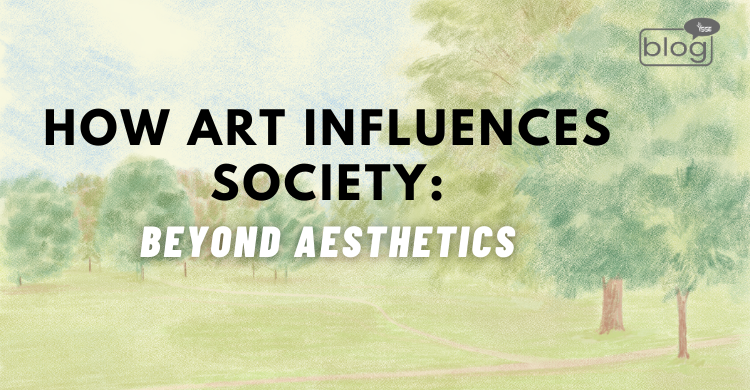Art has been in the core of human civilization from time being such as geography, and culture. Beyond the aesthetic appeal, it expresses itself through the influence on elements other than visual or sensual. It is a mirror that bounces our society’s values back and acts as a catalyst for change and even an unspoken dialogue between men. The interrelation that exists between art and society tangles in such a manner that the power of creativity ends up changing the world.
Art Mirrors Society
One of the strongest roles of art in general is to reflect humanistic values, norms, and struggles. Many artists derive their ideas from the happenings surrounding them and weave this observation into a commentary on the social, political, and cultural dynamism. For example, during the Renaissance period, there was great joy over humanism, individualism, and scientific investigation. We can see such artwork of artists like Leonardo da Vinci and Michelangelo. This could also be related to something similar, the Harlem Renaissance of the 1920s, which has captured the struggles and dreams of African Americans by fusing art, music, and literature as an argument against racial bias, thus rejoicing cultural diversity.
Art is a record of history, a representation of the age in which it was made. “The Third of May 1808” is a masterpiece by Francisco Goya, much more than a painting, as it depicts the horrors of war with brutal honesty and evokes humane feelings for the oppressed.
Art as a Catalyst for Social Change
Beyond reflection, there is art that stirs action and provokes change in society. Throughout history, we see artists use their platforms to question power, question unfairness, and rally people in common toward action. Probably one of the most powerful anti-war statements was Picasso’s “Guernica”. He brought into view brutal realities from the Spanish Civil War clearly. Raw emotion, startling imagery, reverberated across the world in such a manner as to re-enforce the horror of violence and the need for peace.
Street art and graffiti serve more recently as mighty tools of activism. Works by Banksy are satirical, politically charged, and everything from trading to climate change to social inequality. Anonymity is not his trademark; style defines him unmistakably and brings critical conversations into the public view. Banksy’s works make art accessible to everyone, accessible in an intelligently provoking manner.
Art as a Medium for Unspoken Dialogue
Art has even overcome barriers of language; it speaks universally. Color, form, and texture speak to emotion and intellectual insight often hard to put into words. For example, these abstract paintings require one to seek meaning through the viewer’s perspective and thereby create unique ties between artist and audience.
The art gives voice to the voiceless, and it soothes and heals. For a person or community suffering from trauma or loss, it might be therapeutic treatment.
The Role of Technology in Shaping Art’s Influence
Technology in today’s digital era has amplified the reach and impact of art. Social media platforms allow artists to share their work with global audiences through democratizing access to art and fostering virtual communities. Digital tools have also revolutionized artistic creation by enabling innovative forms like virtual reality art, digital installations, and AI-generated works.
Challenges and Responsibilities
With the enormous potential of art to lead change in society comes great responsibility. Representations, cultural appropriation, and commercialization of the arts will dilute its authenticity and impact. These challenges must be addressed by an artist and a consumer in ensuring that art serves good purposes.
Besides, accessibility to art is also a concern. Museums, galleries, and highly priced works of art still seem to be the preserves of the elite few, shutting out larger sections of society. Public installations, community art programs, and digital exhibitions are all ways to make art more inclusive.
Art as a decorative element
Art is so much more than an aesthetic addition that it is a transformative power that shapes minds of ones and inspires movements, and engenders empathy. More than an aesthetic addition, art is a transformative power in shaping minds, inspiring movements, and engendering empathy. Events like this, the work of art represents values that can challenge and serve to bridge and divide our various ways of seeing and engaging in the world. While society continues to change, the function of art will change with it, reminding us of that strong and enduring power in human creativity. This influence, by recognizing and nurturing it, is not only a celebration of artistic expression but an investment in a more reflective and humane world.
To read more blogs like this, click here
Writer
Mahmud Hasan Srabonto
Intern, Content Writing Department
YSSE

